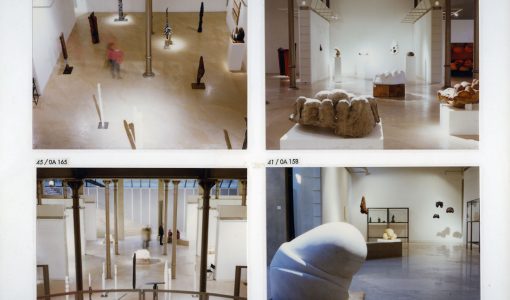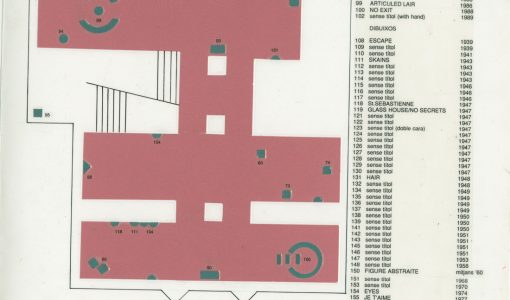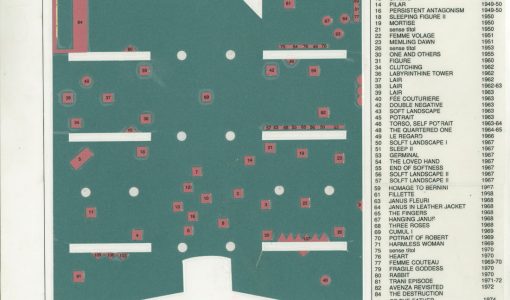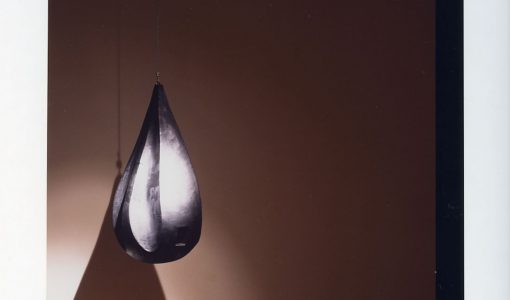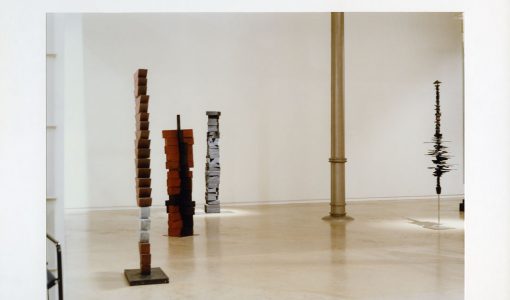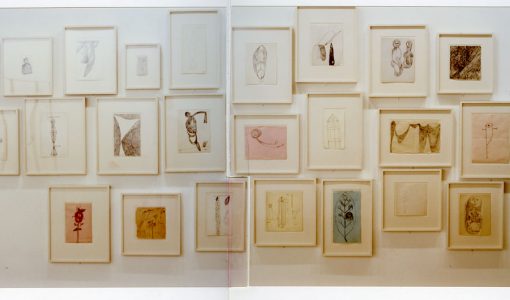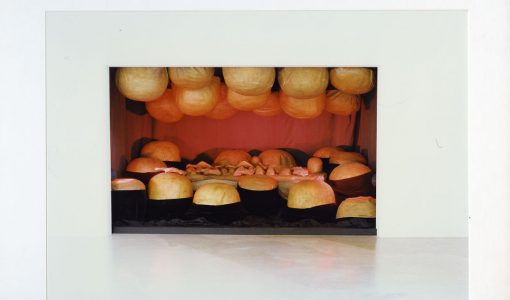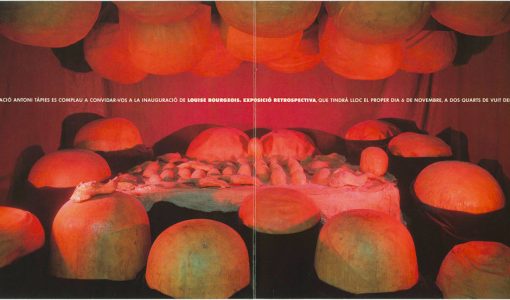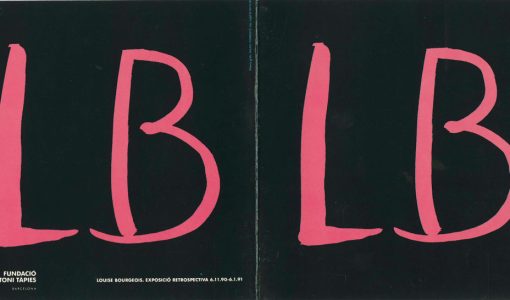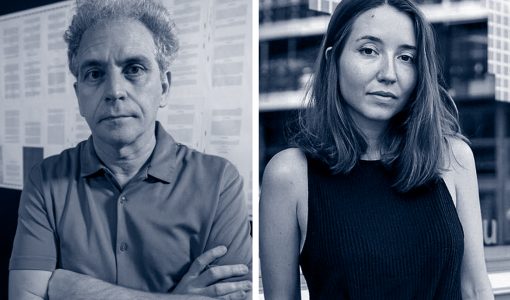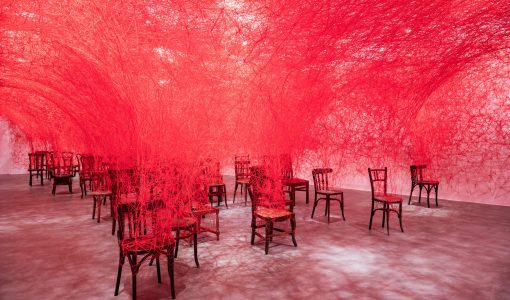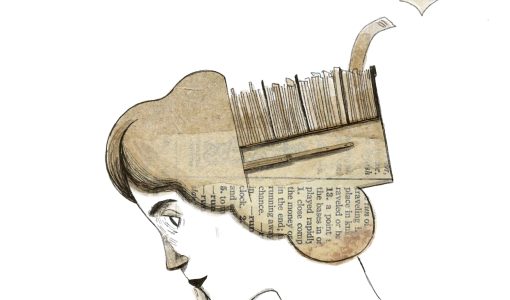
Louise Bourgeois
Home
›
Exhibitions
›
Louise Bourgeois
Louise Bourgeois was born on 25 December 1911. When the First World War finished her parents set up a prosperous family business restoring 16th, 17th and 18th century tapestries. She worked there, redrawing lost details in the works.
In 1932 she enrolled at the Sorbonne to study art history and mathematics. Although she was interested in geometry she was bored by numbers, so she decided to leave university and enrol at the École de Beaux-Arts. She soon began to frequent independent studios, where she studied with André Lhote and Fernand Léger, among others.
In 1938 she met the American art historian Robert Goldwater: she married him and moved to the United States. In New York – the city where she has lived for the last fifty years – she soon became familiar with the local art world, spending time with the Surrealists and other artists and poets in exile there. Her first personal exhibition was held at the Bertha Schaefer Gallery in the city. In 1949 the Paridot Gallery, also in New York, put on her first exhibition of sculptures. At the same time she played an active part in the organisation of the emerging American avantgarde, joining in colloquiums and group exhibitions with representatives of Abstract Expressionism, such as Willem de Kooning and Franz Kline.
She was constantly present on the New York scene through the fifties, but it was not until 1964 that her first major personal exhibition opened at the Stable Gallery. It revealed a dramatic change in her output, in both the formal aspects and the materials (with the use of latex and plaster). In 1966 that change was confirmed when works of hers were included in the exhibition Eccentric Abstraction, which brought together the representatives of the so-called post-Minimalism. Among them Bruce Nauman, Keith Sonnier and Eva Hesse. Until 1970 she elegantly applied her repertory of protuberant, coiled forms and quasi-organic images in variations in marble and, at the opposite extreme, large scale installations in which she used soft “stuffed” or “deflated” materials. Pieces such as Confrontation or A Bouquet/A Fashion Show of Body Parts, both from 1978, combine all the formal and symbolic elements which characterise her work from then on (Cubist grids and Surrealist biomorphism) with elements of performance.
In 1980 her works – from both the early periods and the less known sixties and seventies – could be broadly reassessed thanks to a first series of exhibitions at various galleries. As the exhibitions coincided with the coming of neo-Expressionism, they aligned her once again with a generation of younger artists, as had happened previously when she was associated with the post-Minimalists. In 1982 Deborah Wye organised a major retrospective at MOMA.
Through the 160 or so works that make up this exhibition, mostly sculptures but also paintings, drawings and engravings, we can study her evolution as an artist, from her first productions in the forties to the present day, by way of the provocative, highly original sculptures of the sixties and seventies. The exhibition also shows the attention she has paid throughout her career to certain personal themes and obsessions, whilst revealing her singular personality and the intensity of her work as a whole.
Galeria d'imatges
Dates
06.11.1990 – 06.01.1991
Curator
Peter Weiermeier.
Artist
Louise Bourgeois.
Organised by
Frankfurter Kunstverein, Frankfurt.
Touring
Frankfurter Kunstverein, Frankfurt.
Städtische Galerie im Lenbachhaus, Munich.
Fundació Antoni Tàpies, Barcelona.
Kunstmuseum Luzern, Lucerne.
Musée St. Pierre, Lyon.
Kröller-Müller Museum, Otterloo.
Studios Riverside, London.
